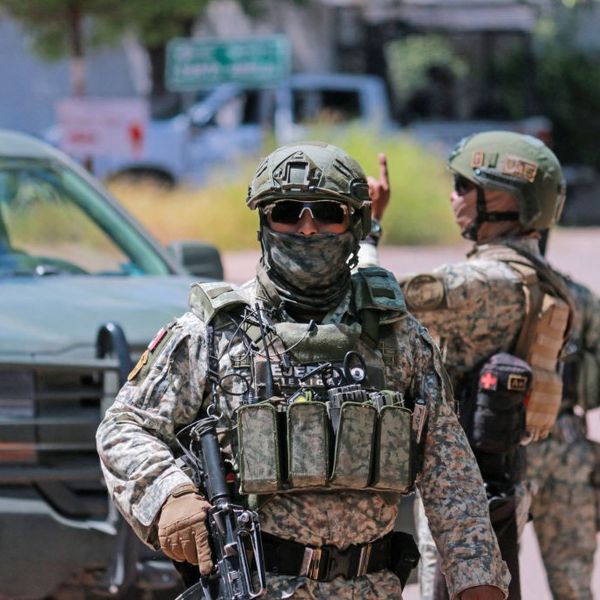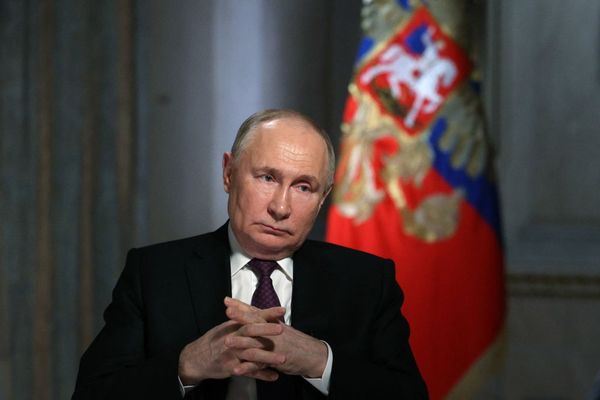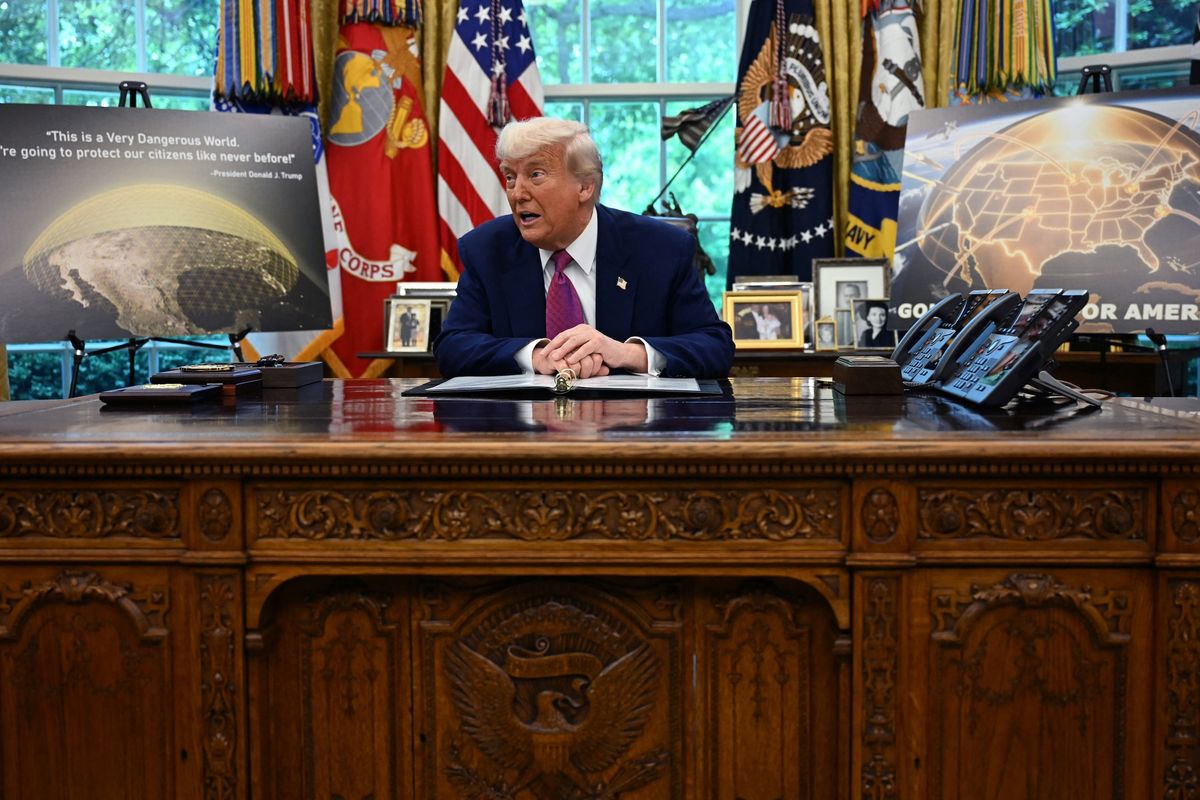OPINION — On February 20, during his visit to Strategic Command (STRATCOM) headquarters near Omaha, Nebraska, Defense Secretary Mark Esper took part in a mini-war-game exercise which led to a simulated Russian firing of a low-yield nuclear weapon and the U.S. launching one back.
The next day, February 21, Defense Department officials held a background briefing for Pentagon reporters and said that the Esper war game scenario was that a conventional war had started in Europe leading Russia to use that low-yield nuclear weapon against a NATO site. In response, and after consultations, the stand-in U.S. president authorized a limited response using an American, low-yield nuclear weapon against an unnamed Russian target.
As one official put it, “They attack us with a low-yield nuclear. I mean, in the course of exercise, we simulated responding with a nuclear weapon.”
What happened next in the war game after the U.S. low-yield weapon struck was not disclosed, but that’s only one of several things worth exploring about this particular exercise.
I was told by one former senior Air Force officer, who has participated in many past such exercises that Esper playing himself as Secretary of Defense in the exercise was highly unusual. Presidents and Defense Secretaries are briefed on such war games, but normally don’t actually take part in them because they actually may have to make a real life and death decision should such a situation actually happen.
Other questions about the game worth asking include what led the Russians to use a nuclear weapon and what was it? What site did it hit and what was the result? What was Esper’s advice to the acting president? What U.S. low-yield weapon was used and what was its target?
And finally, what happened next? The former senior officer and several other former military and civilian officials who have participated in such games said they often end after the first exchange because no one can, or wants to predict what happens next.
This type of nuclear war gaming has been going on for decades. The February 21, Defense briefer told reporters that STRATCOM, the Joint Staff at the Pentagon, and the Navy War College hold so-called table-top exercises fairly regularly with a scenario of “a Russian attack of (sic) Europe and it potentially goes nuclear and you decide what you’re going to do.”
It has to be pointed out that Russian exercises that involve use of non-strategic, nuclear weapons generally have the scenario – unlike the U.S. one — that overwhelming U.S. and NATO conventional forces have invaded Russian territory and threaten Moscow’s control unless one or more low-yield nuclear weapons are used.
Russia has adopted a so-called “escalate to de-escalate” policy, which means it uses a low-yield nuclear weapon first in a conventional war believing it would stop U.S. and NATO forces from escalating because that would lead to all-out nuclear war.
The Trump administration’s 2018 Nuclear Posture Review (NPR) described this as “Moscow threatens and exercises limited nuclear first use, suggesting a mistaken expectation that coercive nuclear threats or limited first use could paralyze the United States and NATO and thereby end a conflict on terms favorable to Russia.”
Dr. Keith Payne, president of the National Institute for Public Policy, who provided advice in the drafting of the Trump NPR, has written that Moscow had produced “precision, super low-yield” nuclear weapons that could be employed in regional conflict…to deter or prevent Western [forces] recovery of territories lost to Russian military coercion and aggression.”
A CIA, declassified, August 2000, intelligence memorandum entitled “Evidence of Russian Development of New Sub-Kiloton Nuclear Warheads,” said such new weapons would “reduce the risk of escalation if Moscow employed limited first strikes.” It said “these limited strikes would ‘de-escalate’ the conflict.”
Russian defense officials were also “interested in low-yield warheads because of fears that a future conflict could be waged on Russian soil,” according to the CIA memorandum. That reflected Moscow’s war game scenario that the U.S. and NATO troops have invaded Russia.
The CIA memo traced development of Russian low-yield, enhanced radiation warheads to tests “conducted in the early 1980s to simulate the effects of a U.S. neutron bomb.” That referred to neutron warheads for U.S. artillery and short-range missiles whose production in 1977 was deferred during the Carter administration, based in part on stories I wrote back then in The Washington Post.
After describing Russian nuclear tests “involving a sub-kiloton device tailored for high output of hard X-rays” planned for the 1990s, the CIA memo concluded, “Judging from Russian writing since 1995 and Moscow's evolving nuclear doctrine, new roles are emerging for very-low yield weapons—including weapons for tailored radiation outputs.''
Not all publicized war games end in nuclear exchanges between Moscow and Washington.
In his new book The Bomb: Presidents, Generals, and the Secret History of Nuclear War, Fred Kaplan describes an Obama National Security Council (NSC) war game played by lower level officials where the scenario was that Russia invaded a Baltic country, U.S. and NATO troops responded successfully and reversed the tide, forcing Moscow to authorize its troops to fire a low-yield nuclear weapon at NATO troops or a base in Germany.
Military officials playing the game wanted a nuclear response. A civilian official suggested a conventional military response since NATO had the advantage, plus a major, international diplomatic effort since this would mark the first use of nuclear weapons since 1945. After hours of discussion, a majority agreed.
A month later, Kaplan wrote, when the game was discussed at an NSC Principals meeting, a Cabinet-member majority quickly agreed on firing responsive low-yield weapons at Belarus, even though it was not involved Russia’s original invasion in the Baltics.
These war games and exercises do not take place in a vacuum. Russian legislators criticized Esper’s war game participation. Alexander Sherin, a member of Russia’s State Duma’s defense committee said, “The first goal is to get the population used to such an inconceivable conflict resolution scenario as a Russian-NATO nuclear strike. The second goal is to intimidate Europe’s population and justify the presence of American bases on their territory as guarantors of security.”
Currently, NATO is carrying out Defender-Europe 2020, with over 20,000 American troops from the U.S. marrying up with 17,000 already on the continent making it the largest force there in 25 years. The only planned element disclosed publicly that relates to nuclear weapons has already taken place. From February 24-29, an internet exercise called “BRILLIANT BLAST 20” provided headquarters training for warning and reporting of chemical, biological, radiological or nuclear attacks.
NATO Secretary General Jens Stoltenberg said, “Defender Europe is not directed against any particular country. This defensive exercise demonstrates the ability to rapidly move a large force from the United States to Europe to help protect other NATO Allies, if needed.”
However, much of the training will take place along the Russian border.
Russian Foreign Minister Sergey Lavrov said last February 4, “Russia will react to the U.S. military exercise in Europe Defender 2020…but it will do so in a way that will rule out unnecessary risks.” He pointed out that Russia carries out its training exercises exclusively on Russian territory, adding, “Equally, Russia keeps its nuclear weapons on its own territory, unlike the United States.” He was referring to U.S. tactical nuclear bombs for NATO shared use based in Belgium, The Netherlands, Italy, Germany and Turkey.
Read more expert-driven national security opinion, insights and analysis in The Cipher Brief.
Disclaimer: The Cipher Brief, like other Amazon Affiliate partners, gets paid a small commission based on purchases made via the links provided in this review














